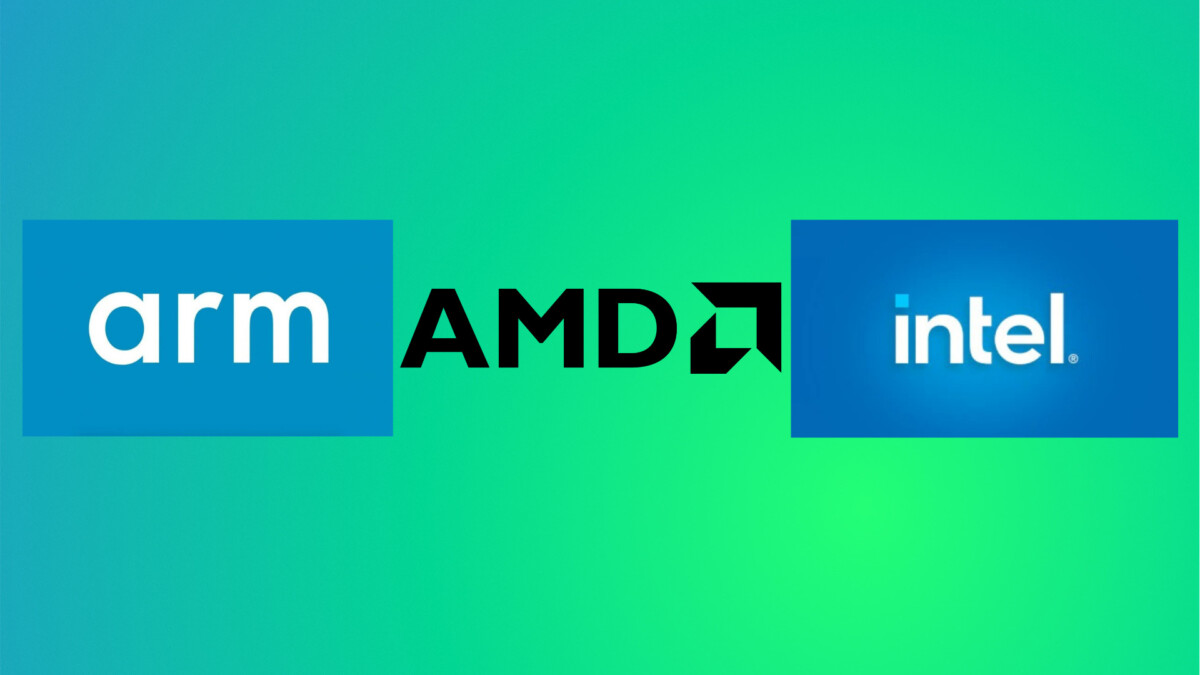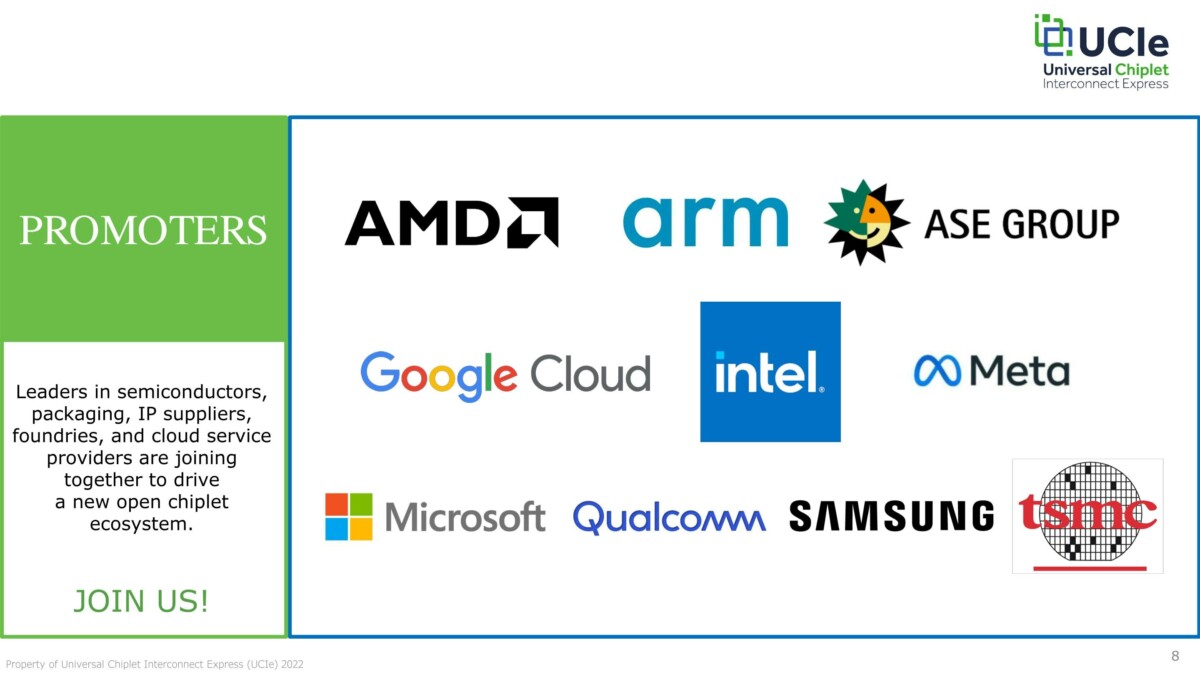The three companies announce the creation of a standard: the UCIe for Universal Chiplet Interconnect Express. The objective is simple, that the whole industry has a common base when it comes to chiplets.

It is likely that you use devices using standards such as USB, Bluetooth or HDMI on a daily basis. These standards have a very concrete utility for users: when you buy a device from a given brand, you have the assurance that it will be compatible with devices from all other brands that use this standard.
Today, we learn throughAnandTech that a new standard has just been created. It goes by the sweet name of UCIe for Universal Chiplet Interconnect Express and it could well change the PC as we know it today in the years to come.
why it matters
The first reason why this announcement has weight is due to its main actors. These are neither more nor less than Intel, AMD and Arm, the three most influential companies when it comes to PC chip design. The fact that these three agree on a standard is already a sign that we are on to something important.
The second reason to think it is important is that the UCIe is interested in chiplets. Without going into too much detail, it is more or less the most fashionable architecture in the industry at the moment. Its principle is simple: rather than manufacturing a single ultra-powerful chip, the CPU is separated into several smaller and specialized units called chiplets. We find them in particular in the Zen 3 architecture of the Ryzen 5000 and 6000 from AMD for example. Intel should also soon offer chips that use this approach. Hence the importance of creating a common standard.
Like PCI Express, the standard for high-speed connection between components, which went through various iterations until the advent of today’s PCIe 4.0, we are therefore witnessing the birth of the first generation of UCIe, the ‘UCIE 1.0. We will of course have to expect in the years to come to see the arrival of a UCIe 2.0, then a 3.0 and so on.
What does it change for you
For the moment, it does not change absolutely anything for the consumer. The idea is not so much to propose a new technology as to formalize an existing set so that the whole industry has “a common base on which to work”as explained Anandtech.
The ultimate goal is clearly to improve performance and efficiency. AnandTech is talking about a potential 20-fold increase in performance compared to what is practiced today, including PCIe 4. But of course, it should take several years before you start to see the end of it on your own machines.
In the long term, this standard could make it possible to bring together in a chip the technologies of several different brands thanks to this common and interoperable base. One could imagine a chip mixing an Intel chiplet with a Qualcomm chiplet and an AMD Radeon chiplet.
Who decided to create the UCIe?
The initiative comes from Intel which “donates the specification to the industry”, as has already been the case for USB, PCIe or Thunderbolt 3. This will be followed by the creation of a UCIe consortium jointly managed by the three companies.
There are already other big names among the “promoters” of the UCIe such as Google Cloud, Meta, Microsoft, Qualcomm, Samsung and TSMC. All Usual Suspects in sum.

Source: UCIe
Let’s be clear, the fact that these companies are joining forces around a new standard clearly means that they believe that there is material to build the future of computing. For several years, many observers have been saying that chiplets are the future of the industry, this decision confirms that.
To follow us, we invite you to download our Android and iOS application. You can read our articles, files, and watch our latest YouTube videos.
